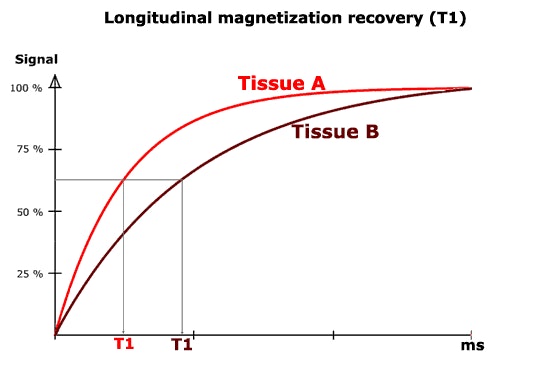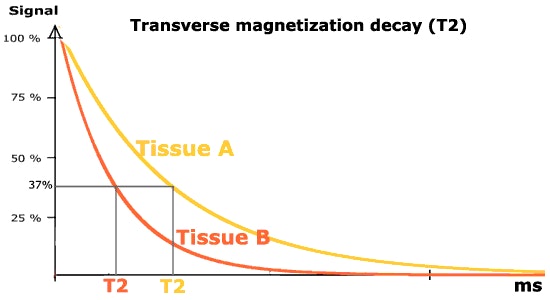Spin echo, TR, TE
Spin Echo sequence is based on repetition of 90° and 180° RF pulses. Spin Echo sequence have two parameters:
- Echo Time (TE) is the time between the 90° RF pulse and MR signal sampling, corresponding to maximum of echo. The 180° RF pulse is applied at time TE/2.
- Repetition Time is the time between 2 excitations pulses (time between two 90° RF pulses).
Each tissue has a specific proton density, T1 and T2 time. The NMR signal depends on these 3 factors. After time T1, longitudinal magnetization has returned to 63 % of its final value. T1 defines the recovery rate of longitudinal magnetization.
For example, here are longitudinal magnetization recovery curves for 2 tissues A and B with different T1s.

After time T2, transverse magnetization has returned to 37 % of its initial value. T2 defines the decay rate of transverse magnetization.
For example, here are transverse magnetization decay curves for 2 tissues A and B with different T2s.

How do TR and TE modify tissue signals?
Let's consider 2 tissues A and B with different T1s. If TR is very long, even if tissue A has a longuer T1 than tissue B, the longitudinal magnetization of both tissues will recover completely before the next excitation.
Thus, the transverse magnetization amplitude will be the same for both tissues after each excitation.
